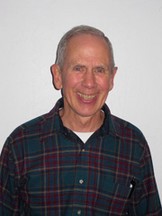The Climate Corner
- Share
- Tweet
- Pin
- Share
We have now seen nine monthly articles on climate change in this space. These columns have had a Wisconsin focus. This month I’d like to broaden the discussion. First some bad news and then some good.
We all have products – smart phones, clothes, and many other items – that are manufactured primarily in China, but also in other Asian nations with rising economies. We appreciate their affordable prices, but do we consider the unintended, but inevitable, consequences of outsourcing the manufacture of these products?
Asian nations burn coal in power plants with very little pollution control equipment in order to run their factories inexpensively. Thus we are, in effect, outsourcing our pollution along with our manufacturing, achieving lower prices at the cost of much greater air pollution. Factories in Asia aren’t just pumping out CO2 that’s warming our planet. They’re also emitting huge amounts of other chemicals and particulates that cause smog and make people sick. Some of these unhealthy emissions are carried across the Pacific Ocean to the western United States – a clear reminder that the pollution of our atmosphere, which is causing climate change and other harmful impacts, is a global problem driven in part by our everyday behavior.
Many of us realize that our oceans are becoming warmer and more acidic. Glaciers are melting. Scientists also are becoming increasingly concerned that as this trend continues much of the ocean life we know may disappear and be replaced by huge swarms of jellyfish. Yes, jellyfish! They are among the oldest, most adaptable animals on the planet and are unbelievably variable in almost every way imaginable from size to human toxicity to reproductive capacity.
If you find the idea preposterous that jellyfish could take over the oceans, consider this. In November of 2009, a net full of gigantic jellyfish, the largest weighing more than 450 pounds, capsized a Japanese trawler, throwing the three-man crew into the ocean. And on July 23, 2006, the USS Ronald Regan, the most modern aircraft carrier then in existence, became crippled while docked in Australia when thousands of jellyfish were sucked into the cooling system of the ship’s nuclear power plant. What other, as yet unforeseen, problems await us as our waters warm?
Now the good news. There is a community in the U.S. that is converting to total renewable energy, complete recycling, and a culture of conservation. Its identity may surprise you. This “net zero” future is being pioneered at Fort Bliss, an army base in El Paso, Texas.
In partnership with El Paso Electric, Ft. Bliss is building a 200-acre solar farm; the base has a plan to convert its waste into energy; it is using wind power, geothermal, aggressive conservation measures, energy efficient vehicles and building bicycle lanes. By 2018, the base will generate all the energy it uses with renewables.
Troops have planted 15,000 trees and the base commander has put its million dollars a year in recycling revenue into skating parks, exercise facilities and other morale-boosting recreation projects. The lesson from all this – living responsibly can be enjoyable!
The actions of Ft. Bliss should be an inspiration to us all. Wouldn’t it be great for our environment and tourist economy if all our Door County communities would become the Wisconsin DNR Green Tier Legacy communities (greentiercommunities.org)?
And there is the story of Frances Whitehead. She is a professor at the School of the Art Institute of Chicago. In 2004, Whitehead converted a 3,000-square-foot warehouse into a greenhouse with wind turbines and geothermal heating and cooling. It serves as an educational classroom and inspires new ways of approaching the post-industrial city.
In 2008, Whitehead launched a program called Slow Change, using plants to reclaim and restore land throughout the city occupied by shuttered gas stations. Currently, she is the lead artist for Chicago’s newest park, “The 606,” which in 2015 will transform three miles of abandoned rail line into parks, bike and running trails and walkways. The signature feature of the park will be 453 apple and serviceberry trees lining the entire three miles. These trees will bloom in a wave from west to east, over the course of five days, thanks to the spring cooling effect of Lake Michigan. The public, and scientists, will be able to track the blooming year-to-year, keeping a running diary of shifts in climate.
Yes, one person can make a difference! It’s happening in Wisconsin too. See the work of Sonya Newenhouse at motherearthliving.com/your-natural-home/building-the-newenhouse-kit-home.aspx#axzz3DDLSWrB1.
Climate change is happening and the consequences of not altering our behavior are scary. But we can change. We can follow the lead of Fort Bliss and Professor Whitehead and make a difference.

Richard (Dick) Smythe was the director of National Research Programs in Fish, Water, Wildlife, Soils, and Atmospheric Sciences at the USDA-Forest Service before retiring in 2000. He has a PhD in Entomology from the University of Wisconsin and serves on the board of directors of the Organization for Tropical Studies, a consortium of colleges, universities and research institutions from around the world. Dick and his wife Mary live in Sister Bay.
The Climate Corner is a monthly column featuring a variety of writers from around the state and Door County addressing various aspects of the challenges and opportunities climate change presents. The Corner is sponsored by the Climate Change Coalition of Door County, which is dedicated to “helping to keep our planet a cool place to live.” The Coalition is always open to new members and ideas. Contact the Coalition at: [email protected].

